The central panel is organized into a medallion in which a Venus is reclining and draped. Around her, a pair of confronted sphinxes are seated. The perimeter of the panel is adorned with a filleted frieze and a second foliate frieze with shells. At either end, a pair of fluted columns and Corynthian capitals with acanthus leaves support the structure, as do two pilasters with long palmettes at the bottom, hiding the wooden cleats and their pegs. Simulating an entablature, a frieze of palmettes surmounts the whole. This is the part that dates from the 17th century, with the small recessed rectangular panels punched and decorated with flowers in the lower register.
The ball feet were added later, along with the hinges, probably in the 19th or early 20th century, and the lock is missing, also re-capped later. The interior of the chest has been restored, so it can be used without any problem. The wood is not molded and there are few wormholes. The Neo-Renaissance parts are the base, with its gadrooned and floral friezes, and the lid, with its garlands of shells and ovals.



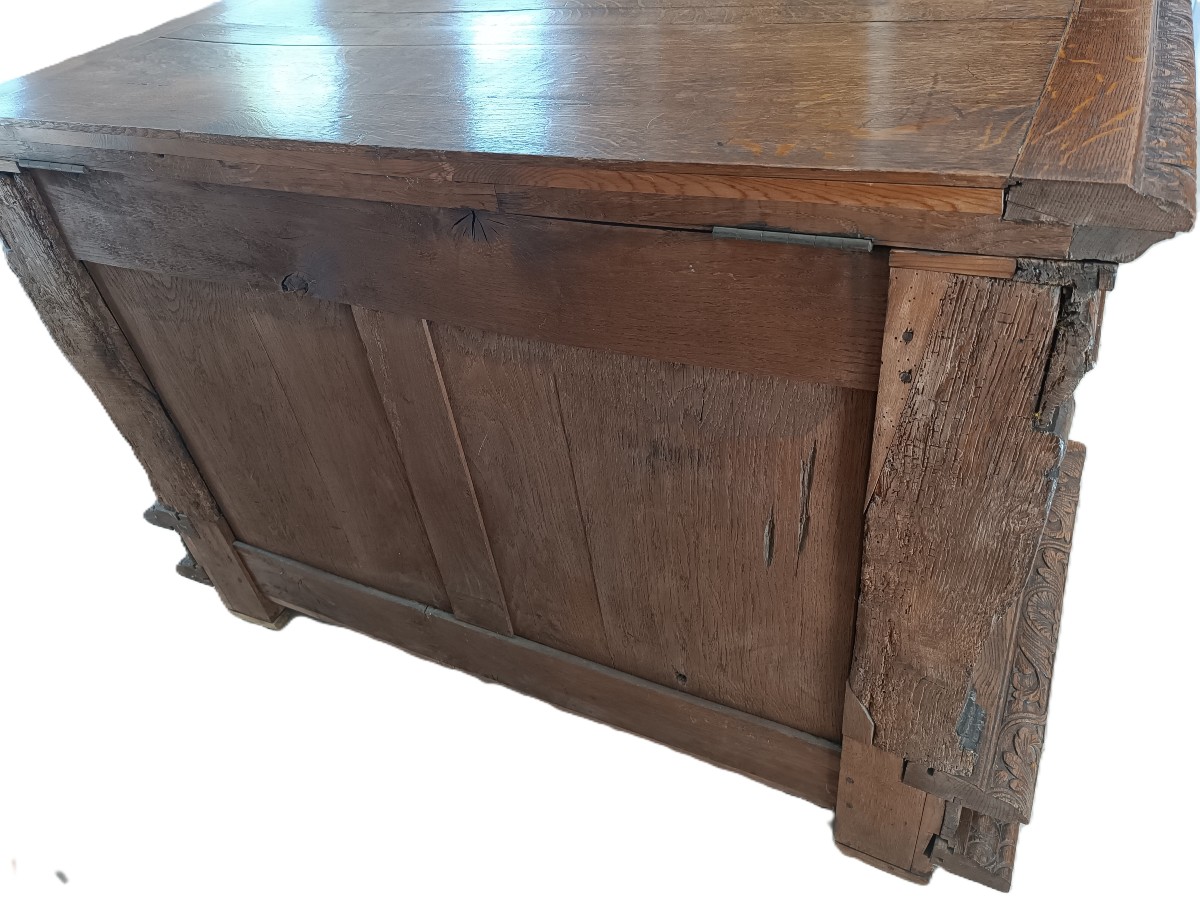

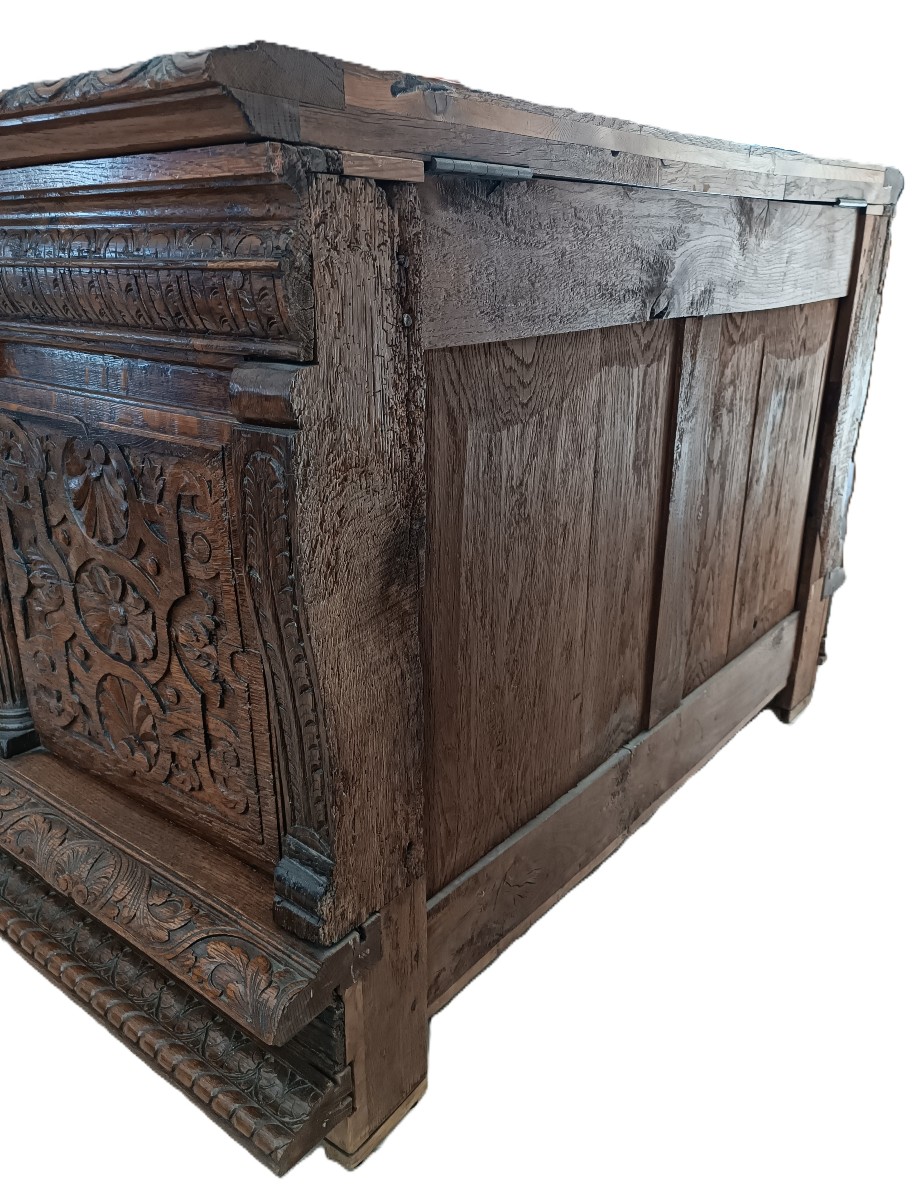



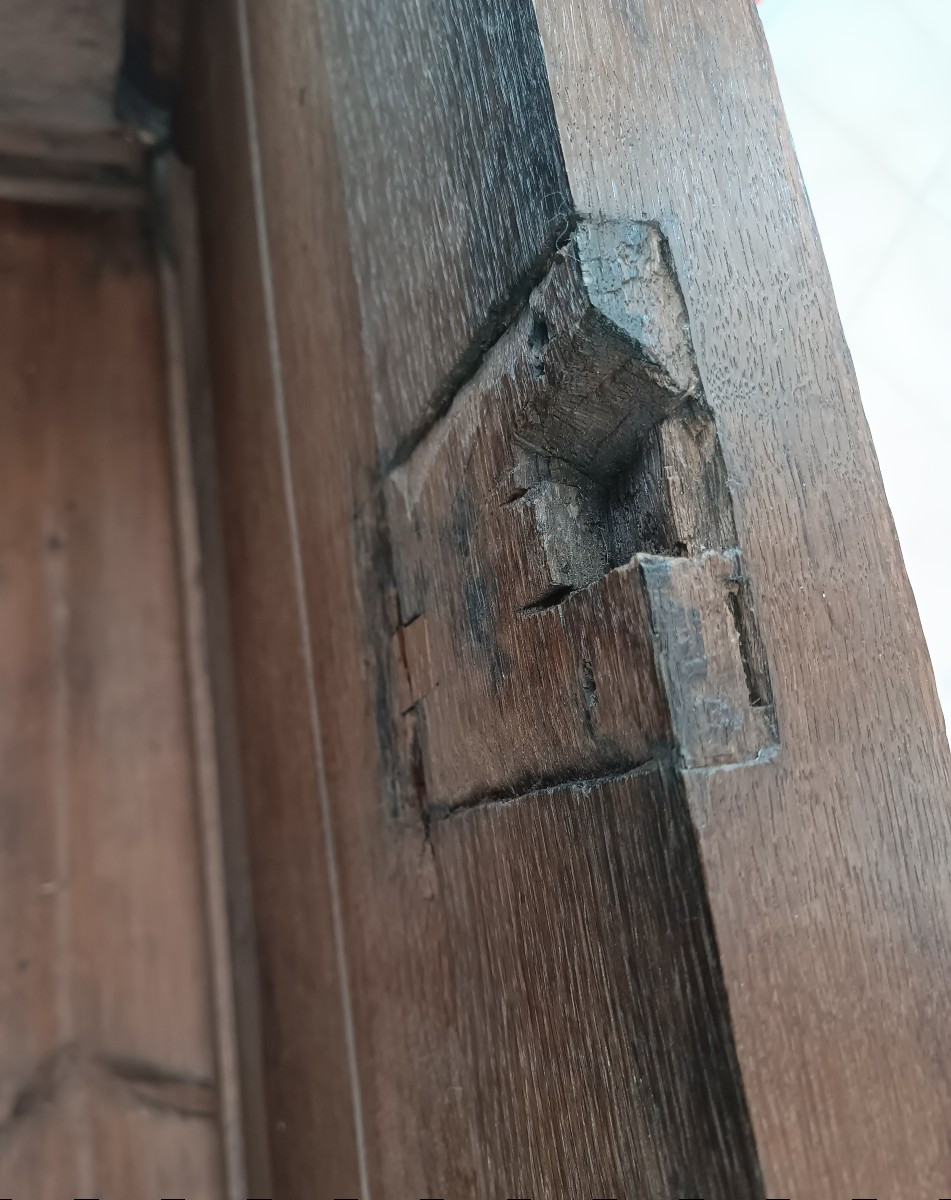


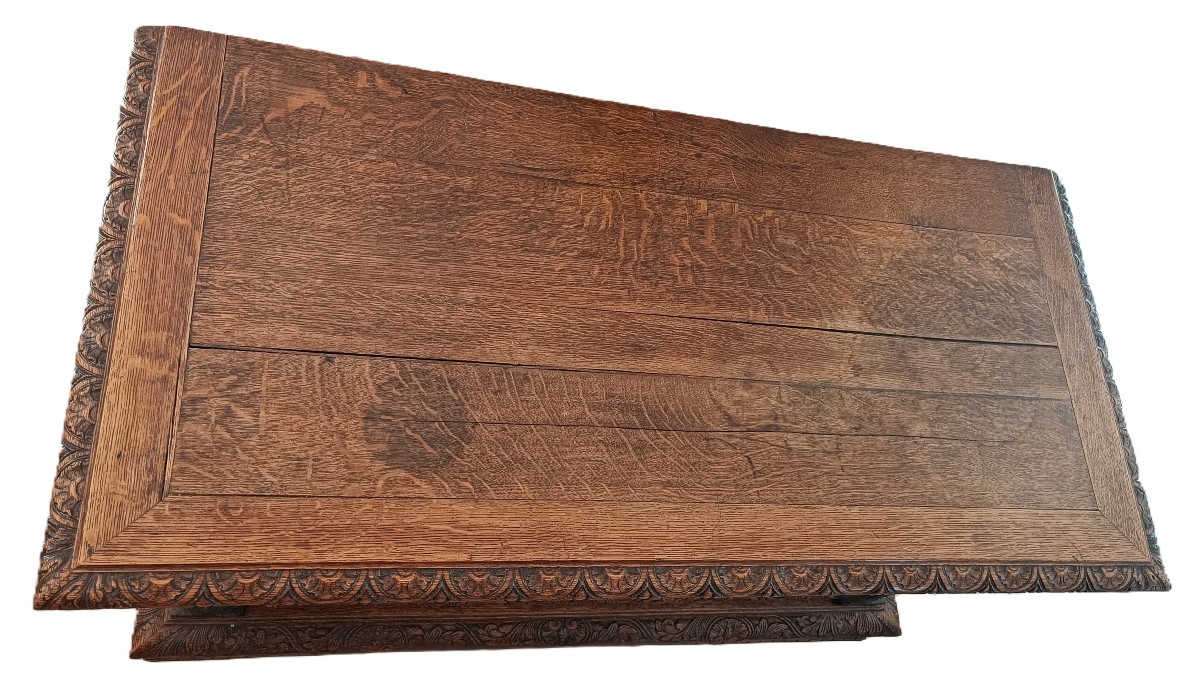












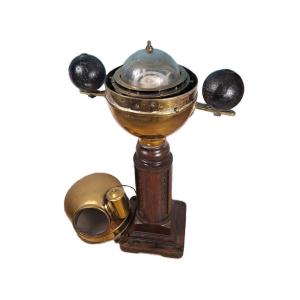
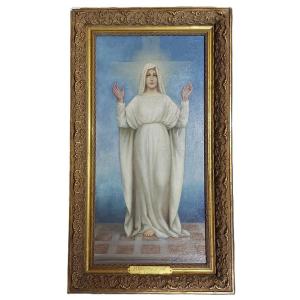

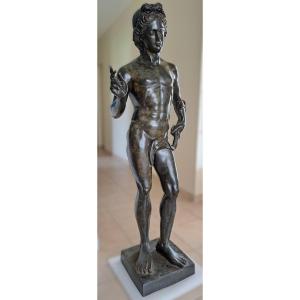
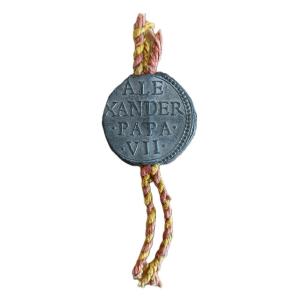





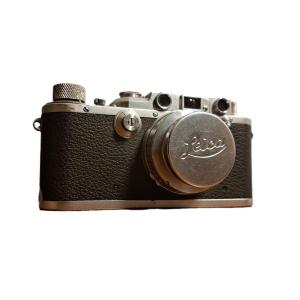
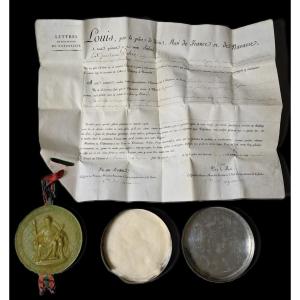
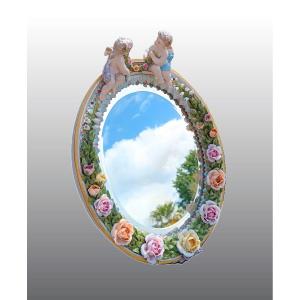
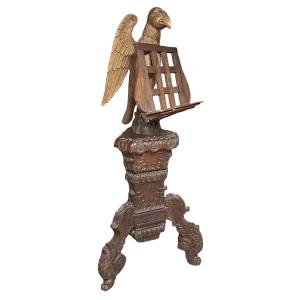
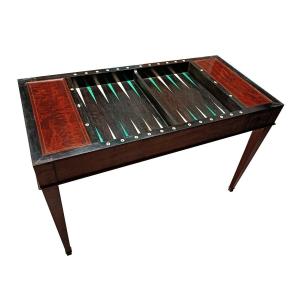








 Le Magazine de PROANTIC
Le Magazine de PROANTIC TRÉSORS Magazine
TRÉSORS Magazine Rivista Artiquariato
Rivista Artiquariato